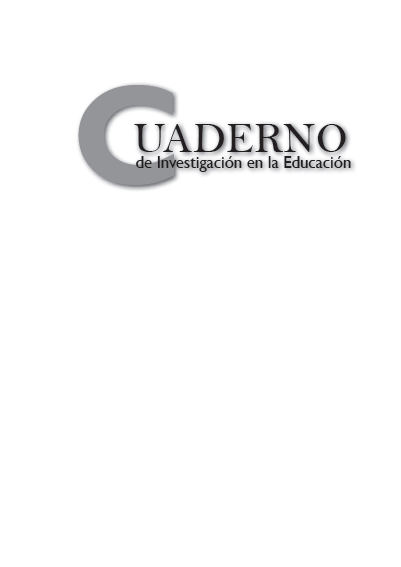Abstract
The purpose of this paper is to help school leaders develop strategic leadership skills that they can adopt into their personal leadership style and practice. Strategic leadership can have an amazing impact on the school leader‘s success in his or her school. Success is measured fundamentally on the sustained growth of student achievement and leadership practice. Leaders will have the opportunity to reflect on his or her leadership practice and utilize some suggested approaches for strategic thinking and strategic planning.
How to cite:
Vázquez-González, D. (2012). A radical change in school leadership: Helping school leaders think and plan strategically to meet the No Child Left Behind (NCLB) Annual Yearly Progress (AYP) in Puerto Rico. Cuaderno de Investigación en la Educación, 27, 93-105. Retrieved from https://revistas.upr.edu/index.php/educacion/article/view/13561
References
Brown, M. E., Trevino, L. K., & Harrison, D. A., (2005). Ethical Leadership: A social learning perspective for constructed development and testing. Organizational Behavior and Human Decisions, 97, 117-134.
Burns, J. M. (1978). Leadership. New York: Harper & Row.
Bush, T., & Glover, D. (2003). Leadership development: A literature review. Nottingham: National College for School Leadership.
Chance, S., & Williams, B. T. (2009). Assessing university strategic plans: A tool for consideration. Educational Plan, 18(1), 38-54
Cheng, Y. C. (2000). Strategic leadership for educational transformation in the new millennium. Chulalongkorn Educational Review, 6(2), 15-32.
Davies, B., & Davies, B. (2005). Strategic leadership. School Leadership and Management, 24(1), 29-38.
Davies, B., & Davies, B. (2010). The nature and dimension of strategic leadership. International Studies in Educational Administration, 38(1), 5-21.
Davies, B., & Ellison, L. (2003). The new strategic direction and development of the school. London: Routledge Falmer.
Freedman, M., & Tregoe, B. B. (2003). The art and discipline of strategic leadership. New York: MGraw-Hill.
Glanz, J. (2006). Strategic leadership. Thousand Oaks: Sage Publications.
Greenleaf, R. K. (1970). The servant as leader. Newton Centre: Robert K. Greenleaf Center.
Heck, D. J., & Weiss, I. R. (2005). Strategic leadership for education reform: Lessons from the statewide system initiatives program (CPRE policy Brief). Philadelphia: University of Pennsylvania Consortium for Policy Research in Education.
Hughes, R. L., & Colarelli-Beatty, K. (2005). Becoming a strategic leader: Your role in your organization‘s enduring success. San Francisco: Jossey-Bass.
Leithwood, K. (1992). The move toward transformational leadership. Educational Leadership, 45(5), 8-13.
Maghroori, R. & Rolland, E. (1997). Strategic leadership: The art of balancing organizational mission with policy, procedures, and external environment. Journal of Leadership Studies, 2, 62-81.
Mintzberg, H. (1994). The rise and fall of strategic planning. New York: Free Press.
National Policy Board for Educational Administration (2002). Standards for advanced programs in educational leadership. Reston, VA: Author.
Northhouse, P. G. (2007). Leadership: Theory and practice. Thousand Oak: Sage Publications.
Porter, M. (1996). What is strategy? Harvard Business Review, 74(6), 61-78.
Quong, T., & Walker, A. (2010). Seven principles of strategic leadership. International Studies in Educational Administration, 38(1), 22-34.
The contents published in the Puerto Rico Journal of Education is freely distributed under open access practices, in accordance with the Creative Commons license, Attribution-NonCommercial 4.0 International (CC BY-NC 4.0). Through these principles, the journal and its authors allow readers to access, reproduce and share articles in full text. Users should give credit to authors in a reasonable way without suggesting they have their support. Under no circumstances, readers may make use of the contents for commercial purposes. The authors retain copyright on their works.

